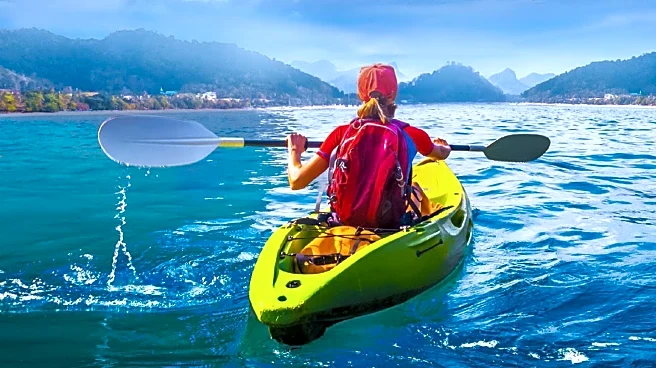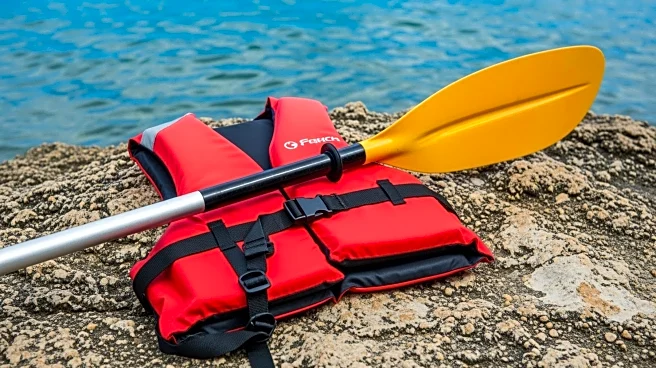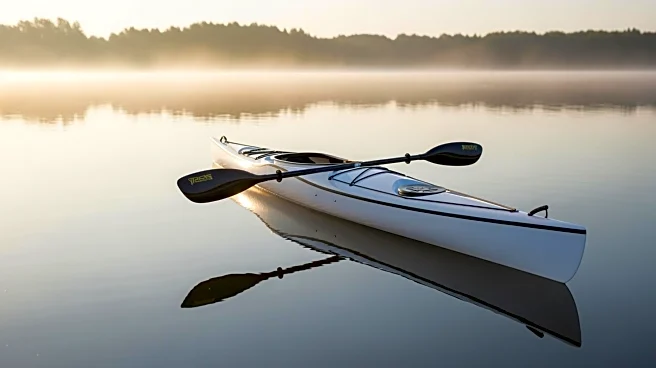What's Happening?
Kayaking is a water sport that involves paddling a small, narrow watercraft called a kayak using a double-bladed paddle. The sport is versatile, allowing participants to engage in various activities such
as camping and fishing while kayaking in different bodies of water, including rivers, lakes, oceans, and surf zones. Kayaks come in various types designed for specific conditions, ranging from white water courses to racing. The sport is accessible to both beginners and experts, offering a unique way to explore waterways and experience marine life. Kayaking provides a low-impact workout and is known for its beginner-friendliness and epic challenges.
Why It's Important?
Kayaking is significant as it offers a unique blend of recreational and fitness benefits, making it an attractive option for individuals seeking outdoor activities. It promotes physical health through a full-body workout and mental well-being by connecting participants with nature. The sport's versatility allows for integration with other activities, enhancing its appeal to a broad audience. Economically, kayaking supports industries related to outdoor recreation, including equipment rental and sales, tourism, and environmental conservation efforts. As interest in outdoor activities grows, kayaking contributes to the expansion of these sectors.
What's Next?
The continued popularity of kayaking is likely to drive innovation in kayak design and safety equipment, catering to diverse user needs. As more people seek outdoor activities, there may be increased demand for kayaking tours and instructional programs, promoting skill development and safety awareness. Environmental groups may leverage kayaking's popularity to advocate for waterway conservation, ensuring sustainable access to natural resources. Additionally, competitive kayaking events could gain traction, offering new opportunities for athletes and organizers.
Beyond the Headlines
Kayaking's impact extends beyond recreation, influencing environmental conservation efforts and community engagement. The sport encourages appreciation for natural habitats, fostering a sense of responsibility towards preserving waterways. It also provides a platform for community building, as enthusiasts often participate in group outings and events, strengthening social connections. As kayaking grows in popularity, it may inspire broader discussions on sustainable outdoor practices and the importance of protecting aquatic ecosystems.











